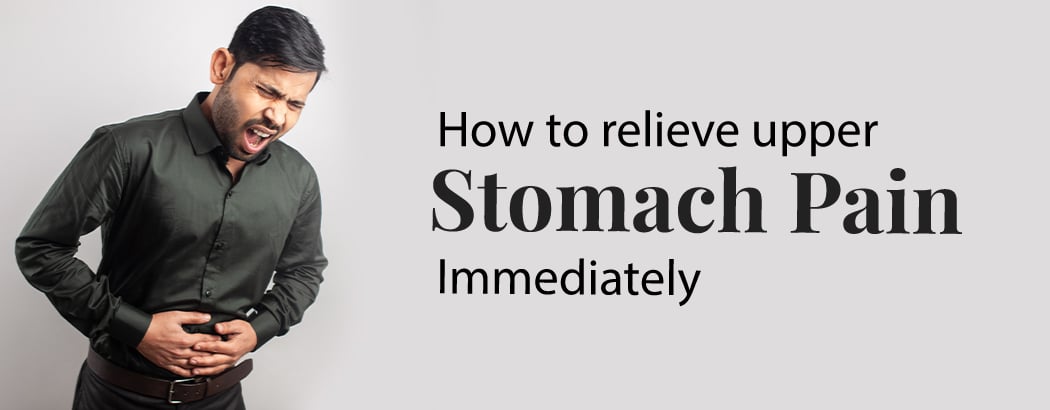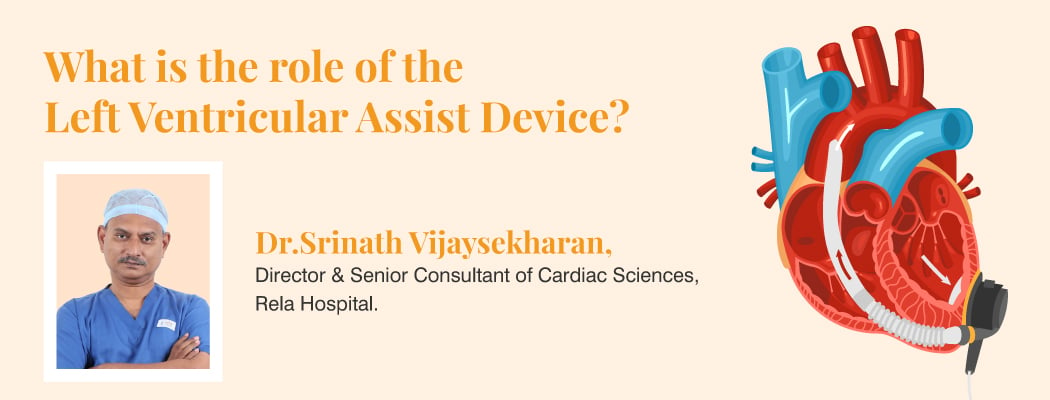How to relieve upper stomach pain immediately?
April 30, 2024

Stomach Pain
Stomach pain can range from a little annoyance to a severe enough pain to interfere with daily activities. It is crucial to consider further symptoms before determining if seeking medical assistance is required.
Upper stomach pain frequently goes away in a few hours or days, especially when it’s caused by small illnesses or gas.
Table of Contents
- Upper Stomach Pain
- Causes of upper stomach pain
- Remedies to relieve upper stomach pain
- Tips to prevent stomach pain
- Visit to the doctor
- Conclusion
- Frequently Asked Questions
Upper Stomach Pain
Any discomfort or ache felt between the chest and the groin is referred to as stomach pain.
This discomfort can vary in severity and target different parts of the abdomen, including the stomach, pancreas, liver, appendix, and gallbladder.
There are many different reasons and degrees of stomach pain. A medical condition like reflux, gastritis, or indigestion is typically indicated by upper stomach pain. Nonetheless, it may also indicate a more serious illness such as pancreatitis, inflammation of the gallbladder, or even a myocardial infarction.
Although it’s typical to also feel symptoms like heartburn, nausea, vomiting, gas, bloating, or diarrhoea, for the most part, this upper stomach ache, also known as epigastric pain, is not alarming.
Causes of upper stomach pain
Upper stomach pain can have a wide range of potential causes. These are the most common causes of upper stomach pain:
- GASTROENTERITIS: When an infection with bacteria, parasites, or viruses causes swelling in the stomach and intestines, it is known as gastroenteritis. Diarrhoea, nausea, and stomach pain are some of the accompanying symptoms.
- DIVERTICULITIS: The intestinal pouches called diverticula, which are characterised by inflammation and/or infection, are the cause of diverticulitis. Upper intestinal diverticula can swell and cause upper stomach pain. Bloody stools, fever, nausea, and vomiting are some typical symptoms.
- EXTRA GAS: Swallowing too much air can often result in gas in the stomach. This may occur after a heavy meal or after overindulging in conversation while eating. Air trapped in the stomach can also result from eating gassy meals like eggs, cauliflower, or onions, as well as from drinking carbonated beverages.
- PERICARDITIS: An illness called pericarditis is linked to inflammation of the heart’s lining. It may induce pain that is akin to a heart attack in the upper abdomen or chest.
- APPENDICITIS: The upper abdomen and the area surrounding the belly button are typically where appendicitis pain first manifests.
- GASTRIC ULCER: Untreated gastritis can lead to the development of a stomach ulcer. The middle of the chest or upper abdomen are common locations for ulcer discomfort.
- HEART ATTACK: Upper abdominal pain rather than traditional chest pain can be a symptom of cardiac issues, such as a myocardial infarction.
- PANCREATITIS: The pancreas is an organ in the middle of the abdomen, and pancreatitis is an inflammation of it. Abrupt, severe pain that may spread to the upper abdomen is a possible symptom of pancreatitis. Bloating, constipation, and vomiting are linked to this pain.
- GALLBLADDER STONES: Although pain caused by gallbladder stones is primarily felt in the upper right abdomen, some patients may also have pain in the upper stomach. Feeling like a cramp, the discomfort gets worse fast and may cause nausea and vomiting.
- INDIGESTION: Reflux, excessive gas production, inflammation of the stomach lining, and increased intestinal flow can all result from indigestion. All of these signs and symptoms may include constipation, diarrhoea, or gas in addition to upper stomach pain or pain anywhere in the abdomen.
- ESOPHAGITIS: A hiatal hernia or acid reflux is the usual cause of esophagitis, an inflammation of the esophageal tissue. Stomach pain may result from this inflammation.
- GASTRITIS: An inflammation of the stomach lining is called gastritis. It may result in mild, moderate, or severe upper stomach pain. A burning or constriction sensation is linked to the discomfort, and it usually appears after eating.
Remedies to relieve upper stomach pain
While stomach pain can be upsetting and unpleasant, several treatments can ease the pain. Let’s delve into some effective strategies for soothing upper stomach pain.
- USING HEATING PAD: For fifteen to twenty minutes, place a heating pad or bottle on your stomach. The warm temperature has the potential to ease stiff or strained muscles. It may also help with constipation and indigestion in certain cases.
Having a warm bath is another way to relieve heat. When indigestion and upper abdominal pain are brought on by stress, this can be beneficial.
- AVOID LYING DOWN: Lying flat might exacerbate upper gastrointestinal pain that may be caused by indigestion, gas, or bloating. Sitting up or resting propped up helps in feeling more at ease and relief from stomach ache.
- DRINKING WATER: Dehydration can occasionally contribute to or cause stomach pain. Drinking water throughout the day can assist ease discomfort if you are suffering from upper stomach pain by rehydrating your body. Gradually rehydrate by sipping water slowly.
- GINGER: One well-known natural treatment for upset stomachs is ginger. Ginger’s calming properties are useful for lessening nausea and vomiting-related discomfort. Ginger can be eaten in food or tea.
- MINT: Mints after supper provide benefits beyond just freshening your breath. Treatment for upper stomach pain may benefit from it. Mint can be taken raw or can be cooked.
In addition to relieving tense muscles and inflammation, peppermint oil can also help manage irritable bowel syndrome, reduce nausea, ease stomach pains, and ease tension that may be contributing to pain
- CINNAMON: An effective treatment for inflammation and upper stomach pain is cinnamon. Cinnamon has antibacterial, antiviral, anti-inflammatory, and antioxidant qualities. Cinnamon can be eaten with food as a stick or as a powder. Tea made with cinnamon is another popular beverage.
- EATING LIGHT DIET: Foods such as bananas, apple sauce, rice, and toast are light on the stomach and easy to digest. These foods are binding and can help ease loose or watery stools in addition to being bland and putting little strain on the digestive system.
- EXERCISE: Depending on the cause, exercise could aid in the relief of a stomach ache. Walking eases constipation and releases trapped gas. It also helps with digestion.
Tips to prevent stomach pain
Stomach aches may be avoided by using the following:
- Consuming less fatty or processed food
- Eating more slowly
- Determining dietary allergies and intolerances
- Increasing water intake
- Minimising stress
- Engaging in regular physical activity
Visit to the doctor
You should visit your doctor for evaluation if your upper stomach discomfort is very severe, does not go away in a few hours, or is accompanied by symptoms like:
- vomiting and nausea lasting several days
- bloody faeces
- breathing difficulties
- significant discomfort in the abdomen when touched
- Pain that lasts for several days and worsens during that time.
- symptoms (dizziness, reduced urine production) of dehydration
Any of these signs would indicate a disease or infection that needs to be treated by a physician.
Conclusion
Abdominal pain can range from a little annoyance to a severe enough ache to make daily tasks impossible. When determining whether to seek medical assistance, it’s critical to consider additional symptoms.
Usually, upper stomach pain goes away in a few hours or days, especially if it is caused by gas or mild infections.
Frequently Asked Questions
1. What kind of pain is felt in the upper stomach?
The symptoms resulting from various causes of upper stomach pain vary. But this pain could also seem like a burning sensation, a dull ache, or a sharp expanding pressure pain.
2. Which organs hurt in the upper abdomen?
These are the organs located in your upper abdomen: The stomach, spleen, liver, pancreas, gallbladder, and bile tubes.
3. How are upper stomach pains treated by doctors?
A doctor will evaluate you physically and inquire about your medical history. To identify the precise reason for your upper stomach pain, they could also perform testing. These could include blood tests that look for inflammation and infections, as well as imaging studies of your tissues and organs. Based on their diagnosis, they will propose a course of treatment to you.







